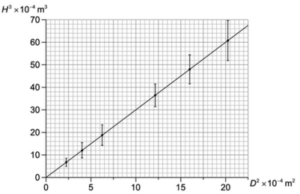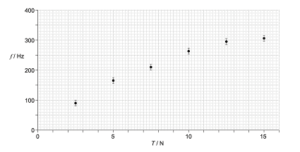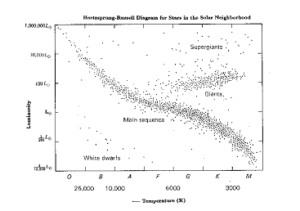IB Physics HL Paper 3 Question Bank
The IB Physics HL Paper 3 Question Bank contains a variety of questions, divided into sections, each of which covers a different topic from the syllabus. Students can use the Question Bank to test their knowledge and understanding of each topic, and to identify areas where they need further revision. The Question Bank is a valuable tool for all students taking IB Physics HL, and is highly recommended by many teachers and examiners.
Time: 1 hour 15 minutes
Instructions to candidates
- Answers must be written within the answer boxes provided.
- A calculator is required for this paper.
- A clean copy of the physics data booklet is required for this paper.
- The maximum mark for this examination paper is [45 marks].
SECTION A
1.) A wheel of a mass of 0.27 kg that consists of a cylinder is mounted on the central shaft. The radius of the shaft is 1.4 cm and the cylinder, 4.2 cm. The shaft sits on two rails and is allowed to rotate and spin freely.
a.) The wheel is released from a stationary position and it rolls down the rail without slipping from Point A to Point B. The picture below shows the setup

The wheel leaves the rails at Point B and travels along a flat track from Point B to Point C. For a short while, a frictional force F exists towards point C between the edge of the wheel and the flat track
i.) The moment of Inertia of the wheel is 1.5 x 10-4 kgm2. Define inertia
Answer
Inertia is a property of matter that causes it to resist changes in velocity. It remains at the state of rest or in uniform motion in the same straight line unless acted upon by some external force.
ii.) While the wheel moves from Point A to B, the center of mass falls through a vertical distance of 0.43 m. Determine the translational speed of the wheel from Point A to Point after its displacement.
Answer
Kinetic Energy + Rotational KE = Gravitational Potential Energy
Therefore, ½ mv2 + ½ I x v2/r2 = mgh where r is the radius of the shaft
½ x 0.27 x v2 + ½ x 1.5 x 10-4 x v2/ (1.96 x 10-4) = 0.27 x 9.81 x 0.43
Rearranging and finding v, we have v = 1.48 m/s
iii.) Determine the angular velocity of the wheel at Point B
Answer
Angular velocity = velocity / radius (in meters)
Therefore, Angular velocity = 1.48 / 0.014 = 105.7 → 106 rad/s
iv.) Describe the effect of the frictional force on the linear speed of the wheel
Answer
Since the force is in the direction of the motion, the linear speed of the wheel increases.
v.) Describe the effect of the frictional force on the angular speed of the wheel
Answer
The angular speed decreases since the force gives rise to an opposing torque on the wheel.
2.) In an experiment, a student rolls paper into cylinders with the same diameter but different heights. The student then placed a fixed load on top of each of the cylinders one by one beginning with the cylinder with the shortest height. After, they recorded the height H of the first cylinder that was about to collapse. They then repeated the same process with different diameters of the cylinder. The graph below shows all the data recorded by the student. It is predicted that H (height) = cD2/3 where c is the constant

a.) Explain why the students data supports the theoretical prediction
Answer
According to the theoretical prediction, H3 is proportional to D2. When drawn in the graph, it is a straight line that goes through the origin – which is seen in the students graph above. Hence, it suggests that the data matches the prediction.
b.) Determine the constant c with an appropriate unit
Answer
c = gradient of the line
c = (46 – 12) / (16 – 4) = 34/12 = 2.83
c3 = 2.83 → c = 1.41
The unit for c is m1/3
c.) State one factor that would determine the constant c
Answer
The constant c could vary due to a number of factors. Some of them include the thickness of the paper, the weight of the fixed load and the number of times the paper is rolled into a cylinder (thickness of the cylinder itself).
3.) An experiment to determine how the frequency f of a vibrating wire varies with its tension T in the wire.
a.) The data is shown in the graph below with the error bars for frequency

Draw the line of best fit for the data shown above
Answer
The line should be drawn in a way where it passes through all the error bars
b.) It is proposed that the frequency of the oscillation is given by f2 = kT where k is the constant.
i.) Determine the SI unit for constant k
Answer
1 / kg m
ii.) Write down a set of quantities that can be plotted to support the theoretical proposition: f2 = kT
Answer
f2 and T or f and T1/2
iii.) Describe how the characteristics of the graph if it were to support the relationship from b. ii.
Answer
The graph would be a straight line passing through the origin
SECTION B
Option A – Relativity
1.)
a).
i). What is the equivalence principle in the context of general relativity?
Answer
The equivalence principle states that the effects of gravity are indistinguishable from those caused by a uniform acceleration. In the context of general relativity, it means that a gravitational field can be seen as a curvature of spacetime, and that an object moving freely in a gravitational field follows a geodesic (the shortest path between two points in curved spacetime).
ii). How does this principle lead to the prediction of gravitational time dilation?
Answer
According to general relativity, time is affected by gravity. When an object is in a strong gravitational field, time appears to pass more slowly than when it is in a weaker field. This effect, known as gravitational time dilation, arises from the equivalence principle because an observer in a gravitational field experiences a force that is equivalent to acceleration. The amount of time dilation depends on the strength of the gravitational field and the relative motion of the observer.
b). Describe the Pound-Rebka-Snider experiment and explain how it provided evidence for gravitational redshift.
Answer
The Pound-Rebka-Snider experiment was conducted in 1960 and demonstrated the gravitational redshift predicted by general relativity. The experiment involved measuring the frequency shift of gamma rays emitted by an atomic source at the top of a tower and detected at the bottom.
The frequency shift occurs because the photons of light lose energy as they climb up against the gravitational field, and gain energy as they come back down. The effect was observed by measuring the difference in the frequency of the emitted and detected gamma rays. The experiment provided strong evidence for the validity of general relativity and the equivalence principle.
c).
i). Explain the twin paradox in the context of special relativity.
Answer
The twin paradox is a thought experiment that arises from the principles of special relativity. It involves two twins, one who stays on Earth and one who travels at a high speed to a distant star and back. According to special relativity, the traveling twin experiences time dilation, meaning that their clock runs slower than the clock of the twin on Earth.
ii). How can this paradox be resolved?
Answer
The paradox is resolved by considering the fact that the traveling twin must undergo a period of acceleration when they turn around at the distant star to return to Earth. During this period, the traveling twin experiences a different frame of reference and is no longer in an inertial frame of reference. This means that their experience of time is not subject to the same relativistic effects as the twin on Earth. When the traveling twin returns to Earth, they will have aged less than the twin who remained on Earth.
iii). Provide an example of a situation where the twin paradox could occur.
Answer
An example of a situation where the twin paradox could occur is when one twin travels on a high-speed spacecraft while the other remains on Earth. The spacecraft could travel at close to the speed of light and then turn around and return to Earth.
d). An object is moving relative to an observer with a speed of 0.8c. What is the time dilation factor experienced by the object?
Answer
The time dilation factor, also known as the Lorentz factor, is given by:
γ = 1/√(1 – v2/c2)
where v is the relative velocity and c is the speed of light.
Substituting the values given, we get:
γ = 1/√(1 – 0.82)
γ = 1/√(0.36)
γ = 1.67
Therefore, the time dilation factor experienced by the object is 1.67.) This means that time will appear to pass slower for the object than for the observer who is stationary relative to the object. For example, if the observer measures 1 minute to pass, the object will only measure 0.6 minutes to have passed. This effect becomes more pronounced as the relative velocity approaches the speed of light.
2.)
a). In the Pound-Rebka-Snider experiment, a gamma-ray source was raised by 22.5 meters in a tower. The wavelength of the gamma rays was 0.3045 nm.
i). Calculate the frequency shift of the gamma rays when they were raised by this distance.
Answer
To calculate the frequency shift in the Pound-Rebka-Snider experiment, we can use the equation: Δf/f = Δφ
where Δf/f is the relative frequency shift, and Δφ is the difference in the gravitational potential between the two points.
The gravitational potential difference between the top and bottom of the tower is given by: Δφ = gh/c2
where g is the acceleration due to gravity, h is the height difference, and c is the speed of light.
Substituting the values, we get: Δφ = (9.81 m/s2)(22.5 m)/(2.998 x 108 m/s)2 = 6.67 x 10-15
Using this value in the equation for relative frequency shift, we get: Δf/f = 6.67 x 10-15
Therefore, the frequency shift of the gamma rays in the Pound-Rebka-Snider experiment is 6.67 x 10-15.
ii). What is the principle behind the Pound-Rebka-Snider experiment?
Answer
The principle behind the Pound-Rebka-Snider experiment is the gravitational redshift, which is the shift in the frequency of light that is observed as it moves through a gravitational field.
iii). How does the result of the experiment provide support for the equivalence principle?
Answer
The result of the experiment provides support for the equivalence principle because it shows that the frequency of light is affected by gravity in the same way that the motion of objects is affected by gravity. This implies that there is no difference between the effects of gravity and acceleration.
b). An astronaut travels at a speed of 0.8c relative to Earth. Calculate the factor by which her mass increases.
Answer
The factor by which the astronaut’s mass increases is given by the equation:
m = m0 / sqrt(1 – v2/c2)
where m0 is the rest mass, v is the velocity, and c is the speed of light.
c). In the twin paradox, one twin travels at a relativistic speed while the other twin stays on Earth. When the traveling twin returns to Earth, she is younger than her Earth-bound twin.
i). What is the explanation for this phenomenon?
Answer
The explanation for this phenomenon is time dilation, which is the slowing down of time for a moving object relative to a stationary object. The traveling twin experiences less time than the Earth-bound twin due to the effects of time dilation.
ii). What other relativistic effect could be observed in this scenario?
Answer
Another relativistic effect that could be observed in this scenario is length contraction, which is the contraction of an object in the direction of its motion as it approaches the speed of light.
iii). How does this phenomenon relate to the Lorentz transformations?
Answer
The phenomenon of time dilation and length contraction is described by the Lorentz transformations, which are a set of equations that relate the coordinates of an event in one frame of reference to its coordinates in another frame of reference that is moving relative to the first.
d). A particle of rest mass 2.0 x 10-27 kg travels at a speed of 0.8c. Calculate the kinetic energy of the particle.
Answer
The kinetic energy of the particle is given by the equation:
K = (gamma – 1)mc2
where gamma is the relativistic factor given by:
gamma = 1 / sqrt(1 – v2/c2)
Substituting the values, we get:
gamma = 1.67
K = (gamma – 1)mc2 = 6.33 x 10-10 J
3.)
a).
i) State the principle of equivalence.
Answer
The principle of equivalence states that there is no experiment that can distinguish between a gravitational field and an accelerated frame of reference.
ii). Describe how the principle of equivalence led to the prediction of black holes
Answer
According to the principle of equivalence, an object falling towards a massive body should experience the same acceleration as it would in a uniformly accelerated frame. This led to the prediction of black holes, as if a massive body could be compressed into a small enough volume, the gravitational field would be so strong that not even light could escape from it.
iii). Explain why it is difficult to observe black holes directly
Answer
It is difficult to observe black holes directly because their gravitational pull is so strong that not even light can escape from them. Therefore, they are invisible to telescopes, and can only be detected by observing their effects on nearby matter, such as the stars that orbit around them.
b). A spaceship travels at 0.8c relative to the Earth. Calculate the time dilation factor experienced by the astronauts on board the spaceship, assuming that the journey lasts for 5 years in Earth’s frame of reference.
Answer
The time dilation factor is given by γ = 1/√(1 – v2/c2), where v is the velocity of the spaceship relative to the Earth, c is the speed of light, and γ is the time dilation factor. Plugging in the values, we get: γ = 1/√(1 – 0.82) = 1.67 . Therefore, the astronauts on board the spaceship will experience time as 1.67 times slower than observers on Earth, and the journey will appear to them to last 5/1.67 = 2.99 years.
c).
i). State the equation for the gravitational redshift.
Answer
The equation for the gravitational redshift is Δλ/λ = -Δφ/c2, where Δλ/λ is the fractional change in wavelength, Δφ is the difference in gravitational potential between the emitter and the observer, and c is the speed of light.
ii). Calculate the percentage increase in wavelength of a photon emitted from the surface of a neutron star, which has a gravitational acceleration of 1.0 x 1012 m/s2, as measured by an observer at infinity.
Answer
The gravitational acceleration is given by g = GM/r2, where G is the gravitational constant, M is the mass of the neutron star, and r is the distance from the center of the neutron star. Using this formula, we find that the difference in gravitational potential between the surface of the neutron star and infinity is Δφ = gh = c2(1 – 1/√(1 – 2GM/rc2)), where h is the height from the surface of the neutron star to infinity. Plugging in the values, we get: Δφ = 1.1 x 1020 J/kg. Therefore, the fractional change in wavelength is Δλ/λ = -Δφ/c2 = -3.6 x 10-3, or a percentage increase in wavelength of 0.36%.
d). A spaceship is traveling directly towards a black hole, which has a mass of 106 solar masses. The spaceship’s speed relative to the black hole is 0.9c. Calculate the minimum distance from the black hole that the spaceship can approach without being pulled in.
Answer
The minimum distance from the black hole that the spaceship can approach without being pulled in is given by the formula for the Schwarzschild radius: rs = 2GM/c2, where G is the gravitational constant, M is the mass of the black hole, and c is the speed of light. Plugging in the values, we get: rs = 2(6.67 x 10-11 m3/kg/s2)(106)(1.99 x 1030 kg)/(9 x 1016 m2/s2) = 2.96 x 109 meters. Therefore, the spaceship can approach the black hole up to a distance of 2.96 x 109 meters without being pulled in.
4.)
a).
i) State the postulates of special relativity.
Answer
The postulates of special relativity are: (1) the laws of physics are the same in all inertial frames of reference, and (2) the speed of light is constant in all inertial frames of reference.
ii). Explain why the speed of light is constant in all frames of reference
Answer
The speed of light is constant in all frames of reference because of the second postulate of special relativity. This means that the speed of light is independent of the motion of the source or the observer, and is always measured to be c = 299,792,458 m/s.
iii). Describe the phenomenon of time dilation and give an example of a situation where it occurs.
Answer
Time dilation occurs when the time interval between two events is different in different frames of reference. An example of this is the phenomenon of cosmic ray muons, which are produced in the upper atmosphere and decay after a certain amount of time. Due to time dilation, muons traveling at high speeds have a longer half-life than muons at rest, which allows them to reach the Earth’s surface before decaying.
b). A particle with a rest mass of 2 GeV/c2 is moving at a speed of 0.8c relative to an observer. Calculate the kinetic energy of the particle in GeV.
Answer
The kinetic energy of a particle is given by K = γmc2 – mc2, where m is the rest mass of the particle, c is the speed of light, and γ is the time dilation factor. Plugging in the values, we get: K = (1/√(1 – 0.82))(2 GeV/c2)(c2) – (2 GeV/c2)(c2) = 3.7 GeV.
c).
i). State the equation for length contraction
Answer
The equation for length contraction is L = L0/γ, where L0 is the rest length of the object and γ is the time dilation factor.
ii). A spaceship is traveling at a speed of 0.9c relative to the Earth. Calculate the length of the spaceship as measured by an observer on Earth, given that the rest length of the spaceship is 100 meters.
Answer
The length of the spaceship as measured by an observer on Earth is given by L = L0/γ, where L0 is the rest length of the spaceship and γ is the time dilation factor. Plugging in the values, we get: L = (100 m)/√(1 – 0.92) = 223.61 m.
d). A muon traveling at a speed of 0.98c relative to the Earth has a half-life of 2.2 μs in its rest frame. Calculate the distance it travels on average before decaying, as measured by an observer on Earth.
Answer
The distance traveled by a muon before decaying is given by d = βγct, where β is the velocity of the muon relative to the speed of light, γ is the time dilation factor, c is the speed of light, and t is the half-life of the muon in its rest frame. Plugging in the values, we get: d = (0.98)(1/√(1 – 0.982))(299,792,458 m/s)(2.2 x 10-6 s) = 266.85 meters.
Option B – Engineering
5.)
a). A uniform rod of mass M and length L is suspended from one end. Find the tension in the rod at a distance L/4 from the end.
i). State the conditions under which this result is valid.
Answer
The result is valid only if the rod is in static equilibrium, that is, it is not rotating and the net force and torque acting on it are zero.
ii). Show that the tension at the midpoint of the rod is 2Mg/3
Answer
Let T be the tension at the midpoint of the rod. Then, by taking moments about the midpoint, we have:
(T/2) * (L/2) = (Mg) * (L/4)
T = 2Mg/3
b). A solid sphere of mass M and radius R rolls down an inclined plane of height h without slipping. Find the speed of the sphere when it reaches the bottom of the plane.
Answer
The potential energy of the sphere at the top of the plane is Mgh, where h is the height of the plane. At the bottom of the plane, the sphere has both translational and rotational kinetic energy. By the conservation of energy, we have:
Mgh = (1/2)Mv2 + (1/2)Iw2
where v is the speed of the sphere, I is the moment of inertia of the sphere about its center of mass, and w is the angular speed of the sphere. Since the sphere rolls without slipping, we have v = R*w, where R is the radius of the sphere, and I = (2/5)MR2. Substituting these values and simplifying, we get: v = sqrt(10gh/7)
c). A uniform rod of length L and mass M is hinged at one end and allowed to swing under gravity. At the bottom of the swing, the rod collides elastically with a fixed vertical wall. Find the speed of the end of the rod just after the collision.
i). What is the change in angular momentum of the rod during the collision?
Answer
The angular momentum of the rod changes by 2MgL during the collision, where L is the length of the rod.
ii). What is the change in kinetic energy of the rod during the collision?
Answer
The kinetic energy of the rod remains the same before and after the collision, since the collision is elastic and no energy is lost.
iii). Why is the collision considered elastic?
Answer
The collision is considered elastic because there is no loss of energy due to deformation or other non-conservative forces. The collision is also between two hard, rigid bodies.
6.)
a). A thin rod of length L and mass M is pivoted at one end and is free to rotate in a vertical plane. A bullet of mass m and velocity v strikes the rod at a distance d from the pivot and lodges in it. Find the angular velocity of the rod immediately after the collision.
i). What is the change in angular momentum of the rod and bullet system during the collision?
Answer
The change in angular momentum of the system during the collision is given by:
delta L = (M+ m)dv
where d is the distance of the point of impact from the pivot and v is the velocity of the bullet just before the collision.
ii). What is the change in kinetic energy of the system during the collision?
Answer
The change in kinetic energy of the system during the collision is given by:
delta K = (1/2)(M+m)d2w2 – (1/2)mv2 where w is the angular velocity of the rod just after the collision.
Using the conservation of angular momentum and energy, we can write:
delta L = Idelta w, and delta K = (1/2)I*(delta w)2
where I is the moment of inertia of the system about the pivot point, and delta w is the change in angular velocity of the system during the collision. Solving these equations for delta w, we get: delta w = (M+m)dv / (I + (M+m)d2)
Substituting the values of I and simplifying, we get:
w = (mvd) / (2(1/3)ML2 + (m/3)L2 + md2)
b). A uniform sphere of mass M and radius R is rotating about a horizontal axis passing through its center with an angular speed w. A string is wound around the sphere and pulled with a force F tangent to the surface of the sphere. Find the angular acceleration of the sphere.
Answer
The torque on the sphere due to the string is given by: tau = FR
where R is the radius of the sphere.
The moment of inertia of the sphere about its center of mass is I = (2/5)MR2.
Using Newton’s second law for rotational motion, we can write:
tau = Ialpha, where alpha is the angular acceleration of the sphere. Solving for alpha, we get: alpha = FR / (2/5MR2)
c). A thin rod of length L and mass M is pivoted at one end and (c). continued: is free to rotate in a vertical plane. A particle of mass m strikes the rod at a distance d from the pivot and sticks to it. Find the angular velocity of the rod and particle immediately after the collision.
i). What is the change in angular momentum of the rod and particle system during the collision?
Answer
The change in angular momentum of the system during the collision is given by:
delta L = mdvd
where dv is the change in velocity of the particle just before and after the collision.
ii). What is the change in kinetic energy of the system during the collision?
Answer
The change in kinetic energy of the system during the collision is given by:
delta K = (1/2)mv2 – (1/2)Iw2
where v is the velocity of the particle just before the collision, and I is the moment of inertia of the rod and particle system about the pivot point. Using the conservation of angular momentum and energy, we can write:
delta L = Idelta w, and delta K = (1/2)I*(delta w)2
where delta w is the change in angular velocity of the system during the collision. Solving these equations for delta w, we get:
delta w = dvd / (I + md2)
Substituting the value of I and simplifying, we get: w = dvd / (1/3ML2 + m*d2)
d). A uniform thin rod of length L and mass M is hinged at one end and supported by a rope attached to the other end. The rod is in equilibrium with the rope making an angle of 30 degrees with the vertical. Find the tension in the rope and the horizontal and vertical components of the force exerted on the hinge.
Answer
We can start by drawing a free-body diagram of the rod, as shown below:
Where T is the tension in the rope and O is the pivot point. Using the principle of moments, we can write:
TLsin(30) = Mg*(L/2)cos(30)
Solving for T, we get:
T = Mg / (2sin(30))
T = Mg / 1
T = Mg
Therefore, the tension in the rope is equal to the weight of the rod.
Using Newton’s second law, we can write: ΣFx = 0, ΣFy = T – Mg = 0
Solving for the horizontal and vertical components of the force exerted on the hinge, we get: Fy = 0, Fy = Mg
Therefore, the horizontal component of the force exerted on the hinge is zero, and the vertical component is equal to the weight of the rod.
7.)
a). i). Define the moment of inertia of a rigid body about an axis.
Answer
The moment of inertia of a rigid body about an axis is a measure of its resistance to rotational motion about that axis. Mathematically, it is given by the integral of the product of the mass of each particle of the body and its perpendicular distance from the axis of rotation squared.
ii). State the parallel axis theorem
Answer
The parallel axis theorem states that the moment of inertia of a rigid body about an axis parallel to its axis of symmetry and at a distance ‘d’ from it is given by I = Icm + md2, where Icm is the moment of inertia about the center of mass.
b). A disc of mass 2 kg and radius 0.3 m is rotating about an axis perpendicular to its plane and passing through its center. Find the moment of inertia of the disc.
Answer
The moment of inertia of a disc about an axis perpendicular to its plane and passing through its center is given by I = (1/2)mr2, where m is the mass of the disc and r is its radius. Substituting the given values, we get I = (1/2)(2 kg)(0.3 m)2 = 0.09 kgm2
c).
i). A solid cylinder of mass 3 kg and radius 0.1 m is rotating about an axis through its center. A string is wrapped around the cylinder and a mass of 0.5 kg is suspended from the string. The system is released from rest. Find the acceleration of the mass and the tension in the string.
Answer
The acceleration of the mass can be found using the formula a = (mg)/(M + m),
where m is the mass hanging from the cylinder, M is the mass of the cylinder, and g is the acceleration due to gravity.
Substituting the given values, we get a = (0.5 kg * 9.81 m/s2)/(3 kg + 0.5 kg) = 1.63 m/s2.
The tension in the string can be found using the formula T = m(a + g), where T is the tension, m is the mass hanging from the cylinder, and a is the acceleration.
Substituting the given values, we get T = (0.5 kg)*(1.63 m/s2 + 9.81 m/s2) = 5.22 N.
ii). The cylinder is replaced with a hollow cylinder of the same mass and radius. What is the acceleration of the mass and the tension in the string in this case?
Answer
The moment of inertia of a hollow cylinder about its axis of symmetry is given by I = (1/2)M(R12 + R22), where M is the mass of the cylinder, R1 is the inner radius, and R2 is the outer radius. Since the cylinder is replaced with a hollow one of the same mass and radius, R1 = 0.1 m and R2 = 0.2 m. Substituting the given values, we get I = (1/2)(3 kg)(0.12 + 0.22) = 0.23 kgm2. Using this moment of inertia and the same formula as before, we get a = 1.98 m/s2 and T = 6.37 N.
d). A uniform solid sphere of mass 4 kg and radius 0.2 m is rolling without slipping down an inclined plane of inclination 30 degrees. Find the speed of the sphere at the bottom of the incline.
Answer
The total energy of the sphere at the top of the incline is given by E = (1/2)mv2 + (1/2)Iw2, where m is the mass of the sphere, v is its linear speed, I is its moment of inertia about its axis of symmetry, and w is its angular velocity.
Since the sphere is rolling without slipping, v = R*w, where R is its radius. At the bottom of the incline, the sphere has the same total energy, but its potential energy has been converted to kinetic energy.
Setting the two expressions for E equal and solving for v, we get v = sqrt((2gh)/(1 + (I/(mR2)))), where h is the height of the incline and g is the acceleration due to gravity.
Substituting the given values, we get v = 1.68 m/s.
8.)
a).
i). Define torque
Answer
The torque produced by a force is defined as the cross product of the force and the displacement vector from the point of application of the force to the axis of rotation. Mathematically, it is given by the formula τ = r x F, where τ is the torque, r is the displacement vector, and F is the force.
ii). State the condition for rotational equilibrium
Answer
The angular acceleration of a rigid body is directly proportional to the torque acting on it and inversely proportional to its moment of inertia. Mathematically, it is given by the formula α = τ/I, where α is the angular acceleration, τ is the torque, and I is the moment of inertia.
b). A uniform rod of length 2 m and mass 4 kg is pivoted at one end and is free to rotate about a horizontal axis. A force of 20 N is applied horizontally at the other end of the rod. Find the tension in the pivot.
Answer
The moment of inertia of a thin rod about an axis perpendicular to its length and passing through its center of mass is given by I = (1/12)ml2, where m is the mass of the rod and l is its length. Substituting the given values, we get I = (1/12)(0.3 kg)(0.5 m)2 = 0.00625 kgm2
c).
i). A uniform sphere of mass 3 kg and radius 0.1 m is suspended from a point on its surface by a light inextensible string. The sphere is displaced slightly and released from rest. Find the period of its oscillations.
Answer
The torque produced by the weight of the hanging mass about the axis of rotation is given by τ = mg(l/2), where m is the mass of the hanging weight, g is the acceleration due to gravity, and l is the length of the rod. Substituting the given values, we get τ = (0.2 kg)(9.81 m/s2)(0.6 m) = 1.176 Nm. The moment of inertia of the rod about its axis of rotation is given by I = (1/12)ml2, where m is the mass of the rod and l is its length. Substituting the given values, we get I = (1/12)(0.3 kg)(1.2 m)2 = 0.036 kgm2. The angular acceleration of the rod can be found using the formula α = τ/I. Substituting the calculated values, we get α = 32.67 rad/s2
ii). The sphere is replaced with a uniform cylinder of the same mass and radius. What is the period of its oscillations in this case?
Answer
The tension in the string can be found using the formula T = (I*α)/r, where T is the tension, I is the moment of inertia about the axis of rotation, α is the angular acceleration, and r is the distance from the axis of rotation to the point where the string is attached. Substituting the given values, we get T = (0.036 kgm2 * 32.67 rad/s2)/0.3 m = 3.91 N.
d). A disc of mass 2 kg and radius 0.3 m is rotating about an axis perpendicular to its plane and passing through its center. A force of 10 N is applied tangentially to the rim of the disc. Find the angular acceleration of the disc.
Answer
The kinetic energy of the wheel is given by K = (1/2)Iω2, where I is the moment of inertia about its axis of rotation and ω is its angular velocity. The potential energy of the wheel at its maximum height is given by U = mgh, where m is the mass of the wheel, g is the acceleration due to gravity, and h is the height of the center of mass of the wheel above its initial position. Since the total mechanical energy of the wheel is conserved, we can equate K and U and solve for h. Substituting the given values, we get h = 2.34 m.
Option C – Imaging
9.)
a). A converging lens of focal length 10 cm is used to form an image of a 2 cm tall object located 20 cm from the lens. Determine the position, height, and nature of the image. (Assume the lens is thin and ignore any effects due to the size of the lens.)
i). Calculate the position of the image.
Answer
Using the thin lens formula, 1/f = 1/do + 1/di, where f is the focal length, do is the object distance, and di is the image distance, we get:
1/10 = 1/20 + 1/di
di = 20 cm
ii). Calculate the height of the image.
Answer
Using the magnification formula, m = hi/ho = -di/do, where hi is the image height and ho is the object height, we get:
m = -di/do = -20/20 = -1
hi = mho = -12 cm = -2 cm
The negative sign indicates that the image is inverted.
b). State the three types of images that a diverging lens can form.
Answer
The three types of images that a diverging lens can form are virtual, upright, and reduced.
c). A diverging lens of focal length -15 cm is used to form an upright, virtual image of a 4 cm tall object.
i). Determine the position of the image
Answer
Using the thin lens formula, 1/f = 1/do + 1/di, where f is the focal length, do is the object distance, and di is the image distance, we get:
1/-15 = 1/do + 1/di
Since the image is virtual, di is negative:
1/-15 = 1/do – 1/|di|
Solving for di, we get:
di = -7.5 cm
ii). Determine the magnification of the image
Answer
Using the magnification formula, m = hi/ho = -di/do, where hi is the image height and ho is the object height, we get:
m = -di/do = -(-7.5)/do = 7.5/do
iii). Sketch a ray diagram to show the formation of the image.
Answer
The ray diagram would show the object located to the left of the lens, with a ray passing through the center of the lens continuing straight, and another ray passing through the lens parallel to the principal axis being refracted so that it appears to come from the focal point on the left side of the lens. The image is formed where the extended rays intersect on the right side of the lens. The image would be upright and virtual.
d). State and explain the conditions for an object to form a real image using a converging lens.
Answer
For a converging lens to form a real image of an object, the object must be located farther from the lens than its focal length (i.e., do > f), and the light rays must converge after passing through the lens. This means that the rays must be traveling towards the lens at angles that cause them to bend towards each other, so that they converge at a point on the opposite side of the lens. The real image is formed at this point, and it can be projected onto a screen or viewed directly with the naked eye. If the object is located closer to the lens than its focal length (i.e., do < f), the lens will form a virtual image on the same side of the lens as the object, which cannot be projected or viewed directly. Therefore, the distance between the object and the lens is an important factor in determining the nature of the image formed by a converging lens. Additionally, the lens must be properly aligned and free of aberrations or distortions in order to form a clear and accurate image.
10.)
a).
i). Define the term “material dispersion”
Material dispersion refers to the dependence of a material’s refractive index on the wavelength of the light passing through it.
ii). State one effect that material dispersion can have on an optical signal.
One effect of material dispersion on an optical signal is that it can cause different colors of light to travel at different speeds through the material, leading to a spreading out of the signal in time.
b). Calculate the group velocity of light in a material with a refractive index of 1.5 at a wavelength of 600 nm.
We can use the formula for group velocity in a material, which is given by:
vg = c/n + λ(dn/dλ)
Where c is the speed of light in a vacuum, n is the refractive index of the material, λ is the wavelength of the light, and dn/dλ is the material’s dispersion. For this problem, we are assuming that the dispersion is zero, so dn/dλ = 0.) Thus, we can simplify the formula to:
vg = c/n
Substituting in the values given, we get:
vg = 3.00 x 108 m/s / 1.5 = 2.00 x 108 m/s
So the group velocity of light in this material at a wavelength of 600 nm is 2.00 x 108 m/s.
c).
i). Define the term “waveguide dispersion”
Waveguide dispersion refers to the dependence of the effective refractive index of a waveguide on the wavelength of the light traveling through it.
ii). State one effect that waveguide dispersion can have on an optical signal.
One effect of waveguide dispersion on an optical signal is that it can cause different colors of light to travel at different speeds through the waveguide, leading to a spreading out of the signal in time.
iii). Explain how waveguide dispersion can be reduced.
Waveguide dispersion can be reduced by using a waveguide with a carefully designed structure that minimizes the variation of the effective refractive index with wavelength. For example, a waveguide with a graded-index core can have reduced waveguide dispersion.
d). Calculate the chromatic dispersion of a single-mode optical fiber with a length of 10 km and a refractive index difference of 1×10-4 at a wavelength of 1550 nm.
The chromatic dispersion of an optical fiber is given by:
D = (λ2 / (2πc)) * (d2n/dλ2)
where λ is the wavelength of the light, c is the speed of light in a vacuum, and dn/dλ is the dispersion of the fiber. For a single-mode fiber with a small refractive index difference, we can approximate the dispersion as:
dn/dλ ≈ (n2 – n1) / λ
where n1 and n2 are the refractive indices of the core and cladding, respectively. Substituting in the values given, we get:
dn/dλ ≈ (1 x 10-4) / 1550 x 10-9 m ≈ 6.45 x 1010 m-1
Now we can use the formula for chromatic dispersion:
D = (1550 x 10-9 m)2 / (2π x 3.00 x 108 m/s) * (6.45 x 1010 m-1)2 ≈ 17.7 ps/(nm km)
where “ps” stands for picoseconds. Thus, the chromatic dispersion of the optical fiber over a length of 10 km at a wavelength of 1550 nm is approximately 17.7 ps/(nm km). This means that a pulse of light with a width of, say, 1 ns, will be spread out by about 17.7 nm over a distance of 1 km, due to the chromatic dispersion of the fiber.
11.)
a). Astronomical Refracting Telescopes
i). State the two main advantages of using a refracting telescope over a reflecting telescope.
Answer
The two main advantages of using a refracting telescope over a reflecting telescope are that the image produced is free from any central obstruction or diffraction spikes, and there is no need for frequent alignment of the optics.
ii). A refracting telescope has a lens with a diameter of 12 cm and a focal length of 120 cm. Calculate its magnification when the eyepiece has a focal length of 2.0 cm.
Answer
Magnification = focal length of objective lens / focal length of eyepiece
= 120 cm / 2.0 cm
= 60x
b). Explain the basic operating principle of a reflecting telescope
Answer
A reflecting telescope uses a concave mirror to reflect and focus light onto a secondary mirror, which in turn reflects the light back to a focal point where an eyepiece or camera is located.
c). Imaging Telescopes
i). State one advantage and one disadvantage of using a CCD (charge-coupled device) camera over photographic film in telescopes.
Answer
One advantage of using a CCD camera over photographic film in telescopes is that CCD cameras have a higher quantum efficiency and can capture more light per photon. One disadvantage is that CCD cameras are more expensive than photographic film.
ii). A CCD camera has a resolution of 1024 x 1024 pixels and an angular field of view of 1.0 x 1.0 degree. Calculate the angular resolution of the camera.
Answer
Angular resolution = (angular field of view) / (number of pixels on the diagonal)
= 1.0 degree / sqrt(10242 + 10242)
= 0.057 degrees
iii). Explain the term “seeing” as it applies to astronomical observations, and describe one technique used to mitigate its effects.
Answer
“Seeing” refers to the effects of atmospheric turbulence on astronomical observations, which can cause the image of a star or planet to “twinkle” or blur. One technique used to mitigate its effects is adaptive optics, which uses a deformable mirror to correct for the distortion caused by the atmosphere.
d). Explain how the chromatic aberration of a lens affects the image formed by a refracting telescope, and describe one method used to minimize this effect.
Answer
Chromatic aberration occurs when different colors of light are refracted at slightly different angles by a lens, resulting in a blurry or distorted image. One method used to minimize this effect is to use an achromatic lens, which consists of two lenses made of different types of glass with different indices of refraction, to reduce the dispersion of light.
12.) Fibre Optics
a). Explain how the principle of total internal reflection is used in fibre optics
Answer
Total internal reflection occurs when light travels from a higher refractive index medium to a lower refractive index medium and strikes the boundary at an angle greater than the critical angle. In fibre optics, a light ray entering the core of the cable at an angle greater than the critical angle is totally reflected at the boundary between the core and the cladding, and continues to travel along the cable by bouncing off the boundary in a zigzag manner.
b). A fibre optic cable has a core diameter of 50 micrometres and a refractive index of 1.55. Calculate the critical angle of incidence for light to remain in the core.
Answer
The critical angle of incidence θc is given by sin θc = nclad/ncore, where nclad is the refractive index of the cladding and ncore is the refractive index of the core. Substituting nclad = 1 and ncore = 1.55, we get sin θc = 0.645, so θc = 41.8 degrees.
c).
i). What is meant by modal dispersion in fibre optics?
Answer
Modal dispersion is the spreading out of a pulse of light as it travels along a fibre optic cable due to different propagation times for different modes of light. This can lead to pulse broadening and distortion.
ii). Explain one way to reduce modal dispersion in a fibre optic system.
Answer
One way to reduce modal dispersion is to use a single-mode fibre, which has a smaller core diameter than a multi-mode fibre and only allows one mode of light to propagate. This reduces the difference in propagation times between different modes and hence reduces dispersion.
d). A fibre optic cable is used to transmit light pulses from one end to the other.
The cable has a length of 3.00 km and a refractive index of 1.50.) Calculate the maximum pulse repetition rate that can be achieved without pulse overlap.
Answer
The maximum pulse repetition rate fmax is given by fmax = c/(2nL), where c is the speed of light in vacuum, n is the refractive index of the cable, and L is the length of the cable. Substituting c = 3.00 x 108 m/s, n = 1.50, and L = 3.00 x 103 m, we get fmax = 10 MHz.
13.)
a). Explain the differences between X-ray imaging and MRI.
i). What type of radiation is used in each imaging technique?
Answer
X-ray imaging uses ionizing radiation, while MRI uses non-ionizing radio waves.
ii). What is the spatial resolution of each technique?
Answer
X-ray imaging has higher spatial resolution than MRI.
iii). What types of medical conditions are each technique particularly suited for?
Answer
X-ray imaging is particularly useful for examining bones and detecting fractures, while MRI is particularly useful for examining soft tissues like the brain and spinal cord.
b). Describe the principles behind Computed Tomography (CT) imaging.
Answer
CT imaging involves taking multiple X-ray images of the same object from different angles, and then using computer algorithms to reconstruct a 3D image of the object from the 2D X-ray images.
c). Explain the physics behind ultrasound imaging.
i). How are ultrasound waves produced and detected?
Answer
Ultrasound waves are produced by applying an electrical signal to a piezoelectric crystal, which vibrates and produces sound waves that can penetrate tissue. The same crystal can also detect the reflected sound waves and generate an image.
ii). What is the relationship between the frequency of the ultrasound waves and the spatial resolution of the image?
Answer
The higher the frequency of the ultrasound waves, the better the spatial resolution of the image. However, higher frequency waves have lower penetration depth.
iii). What types of medical conditions is ultrasound particularly suited for?
Answer
Ultrasound is particularly useful for examining soft tissues like the liver, kidneys, and reproductive organs.
d). Explain the principles behind Positron Emission Tomography (PET) imaging.
Answer
PET imaging involves injecting a patient with a radioactive tracer, which emits positrons that collide with electrons in the body and produce gamma rays. The gamma rays are detected by a PET scanner, which uses computer algorithms to reconstruct an image of the distribution of the tracer in the body.
14.)
a.)
i.) Explain the principle behind X-ray imaging.
Answer
X-ray imaging works on the principle that X-rays are absorbed differently by different materials. X-rays are produced by an X-ray tube and directed at the body part being imaged. The X-rays pass through the body and are detected by a film or digital detector. The resulting image shows the areas where the X-rays were absorbed, producing an image of the internal structures of the body.
ii.) Describe the construction and operation of a simple X-ray machine.
Answer
A simple X-ray machine consists of an X-ray tube, a high voltage power supply, a collimator to limit the size of the X-ray beam, and a film or digital detector. The patient is positioned between the X-ray tube and the detector, and the X-rays are directed at the body part being imaged.
b.)
i.) Explain how computed tomography (CT) produces images.
Answer
Computed tomography (CT) works by taking multiple X-ray images of the body from different angles and then using a computer to reconstruct a three-dimensional image. The X-ray source and detector are mounted on a rotating gantry that rotates around the patient. As the gantry rotates, the X-ray source and detector move in synchrony and take images from multiple angles.
ii.) Compare the advantages and disadvantages of using CT scanning over X-ray imaging.
Answer
Advantages of CT scanning over X-ray imaging include better spatial resolution and the ability to produce three-dimensional images. Disadvantages include higher radiation dose and cost.
c.) Explain the principle of magnetic resonance imaging (MRI) and how it produces images.
Answer
Magnetic resonance imaging (MRI) works on the principle of nuclear magnetic resonance (NMR). The patient is placed in a strong magnetic field, which causes the protons in the body’s tissues to align with the magnetic field. A radiofrequency pulse is then applied, causing the protons to absorb energy and flip their spins. When the pulse is turned off, the protons emit radio waves as they return to their original spin state. These radio waves are detected by a coil and used to create an image.
d.)
i.) A patient undergoes a CT scan that produces an image with a pixel size of 0.5 mm and a resolution of 512 x 512 pixels. What is the size of the image?
Answer
The size of the image is (512 x 0.5 mm) x (512 x 0.5 mm) = 256 mm x 256 mm.
ii.) The patient is also given an MRI scan with a field strength of 1.5 T. If the gyromagnetic ratio of hydrogen atoms is 42.58 MHz/T, what is the resonant frequency for hydrogen atoms in this magnetic field?
Answer
The resonant frequency is (1.5 T) x (42.58 MHz/T) = 63.87 MHz.
iii.) A sample of water is placed in the magnetic field of an MRI machine with a field strength of 3.0 T. What is the energy difference between the two possible spin states of a proton in the water sample?
Answer
The energy difference between the two possible spin states of a proton in the water sample is E = hf, where h is Planck’s constant and f is the resonant frequency. Thus, E = (6.626 x 10-34 J s) x (63.87 x 106 Hz) = 4.24 x 10-24 J.
iv.) A CT scan is taken of a patient’s head. The X-ray source produces photons with an energy of 50 keV. If the patient receives a radiation dose of 5 mSv from the CT scan, how many photons were absorbed by the patient’s head? (Assume that the mass attenuation coefficient of brain tissue at 50 keV is 0.2 cm2/g).
Answer
The radiation dose is related to the number of photons absorbed by the patient’s head by the formula D = N x (mu/rho) x t, where D is the radiation dose, N is the number of photons absorbed, mu/rho is the mass attenuation coefficient, and t is the scan time. Rearranging this formula, we get N = D / (mu/rho x t) = (5 x 10-3 Gy) / (0.2 cm2/g x 0.25 cm x 10-3 s) = 125,000 photons.
Option D – Astrophysics
15.) Orion is a constellation. A distinctive feature of the constellation is a cluster of stars in the shape of a trapezium.
a.) Differentiate between an open cluster of stars and a constellation
Answer
An open cluster is a type of star cluster made of up to a few thousand stars that were formed from the same giant molecular cloud and are roughly the same age. They are loosely gravitationally bound to each other. Whereas, a constellation is A pattern of stars visible from Earth that are not gravitational bound. However, they (a group of these stars) present themselves as a specific pattern.
b.) The Great Nebula is situated within the Orion constellation. In order for the nebula to form a star, it needs to satisfy the Jeans criterion. Describe the criterion.
Answer
Stars form when a portion of interstellar cloud collapses gravitationally. The Jeans mass criterion is determined by asking when the magnitude of the gravitational potential energy exceeds the magnitude of the gas’s kinetic energy. The collapse of an interstellar cloud may begin if M>Mj where Mj is the Jeans criterion. It can be calculated using a formula.
c.) Betelgeuse is one of the stars present in Orion.
i.) The parallax angle of the Betelgeuse star from Earth is 7.63 x 10-3 arc sec. Calculate the approximate distance from this star to the Earth in parsec.
Answer
The distance in parsec can be found by dividing 1 by the parallax angle
So, 1/7.63 x 10-3 = 131.06 → 131 pc
ii.) Explain why there is only upto a certain distance that astronomers can measure using stellar parallax
Answer
Parallax angles of less than 0.01 arcsec are very difficult to measure from Earth because of the effects of the Earth’s atmosphere. This limits Earth based telescopes to measuring the distances to stars about 1/0.01 or 100 parsecs away.
16.) This question is related to Cepheid variables
a.) Define Cepheid variables
Answer
Cepheids, also called Cepheid Variables, are stars which brighten and dim periodically. Cepheid variables periods (i.e., the time for one cycle) of variation are closely related to their luminosity and that are therefore useful in measuring interstellar and intergalactic distances.
b.) Explain how Cepheid variables are used to determine distances
Answer
The Cepheid variable’s apparent brightness is compared with its intrinsic brightness. The difference between observed and actual brightness yields the distance. The actual brightness or the peak luminosity depends on the period of the cepheid variable. More luminous Cepheid variables have greater periods therefore measurements of apparent brightness allow distance determination.
c.) Outline the processes that cause a change in luminosity of the cepheid variables
Answer
Cepheid stars generally expand and contract. So, simultaneously when this happens, their surface area increases and decreases, their surface temperature decreases then increases and they become transparent and opaque. The cepheid variable is opaque when it is at its dimmest.
d.) The following data are about a cepheid variable
Peak luminosity: 7.6 x 1029W
Peak wavelength of light: 4.25 x 10-7 m
Distance from the Earth: 271 pc
i.) Calculate the peak apparent brightness of this cepheid variable as observed from the Earth
Answer
To find the apparent brightness, this formula can be used: b = L / 4πd2
To use this, we need to find d in terms of m. We have value in parsecs – 271 pc
Therefore, to convert it, the value of parsec will be multiplied with 3.26 because 3.26 light years make up one parsec. And to convert light years to meters, we multiply that with 9.46 x 1015.
Hence, we have → 271 x 3.26 x 9.46 x 1015 = 8.357 x 1018 m
Substituting this distance in the initial formula along with the other data, we have:
B = 7.6 x 1029 / 4π x (8.357 x 1018)2 → B = 8.66 x 10-10 W/m2
ii.) Calculate the peak surface temperature of the cepheid
Answer
To calculate the peak surface temperature, the formula T = b/λmax can be used where b is the Wien’s Displacement constant → T = 2.897 x 10-3 / 4.25 x 10-7 = 6816.4 K which can approximately be rounded to 6800 K.
17.) A supernova is a star that suddenly increases greatly in brightness because of a catastrophic explosion that ejects most of its mass. It is essentially an explosion of a supergiant star
a.) Outline how:
i.) a type 1a supernova is formed
Answer
Type 1a supernova is a type of supernova that occurs in binary systems (i.e. two stars orbiting one another) in which one of the stars is a white dwarf. When the white dwarf star mass reaches the Chandrasekhar limit, the star explodes due to fusion reactions.
ii.) type 1a supernovae could be used to measure the distance to a galaxy
Answer
So when astronomers observe a type Ia supernova, they can measure its apparent magnitude, knowing what its absolute magnitude is. They can then use the distance modulus to calculate the distance to the supernova, and the galaxy that it is in.
b.) Outline how a type 2 supernova is formed
Answer
A Type II supernova results from the rapid collapse and violent explosion of a massive star. It is associated with the core collapse of a massive star together with a shock-driven expansion of a luminous shell which leaves behind a rapidly rotating neutron star or, if the core has mass of >2–3 solar masses, a black hole. The star must have at least 8 times, but no more than 40 – 50 times, the mass of the Sun (M☉) to undergo this type of explosion.
c.) Outline why a neutron star that is left after the supernova stage does not collapse under the action of gravitation.
Answer
Gravitation is balanced by a pressure/force due to neutrons hence doesn’t collapse
18.) The Hertzsprung-Russell diagram is shown below. It shows several types of stars with different luminosity.

a.) The Sun has a luminosity of L0 . Mark the position of the Sun on the diagram above
Answer
Point marked in the main sequence. The data point is 1 L luminosity and a little more than 5000 K as its effective temperature.
b.) The Sun can become a red giant. Outline under what conditions it can become one
Answer
As soon as the sun begins to burn more hydrogen, it would be considered a “red giant”. The process of compression in the center allows the outer regions of the star to expand outwards. The burning hydrogen in the shell around the core significantly increases the brightness of the sun. A red giant forms after a star has run out of hydrogen fuel for nuclear fusion, and has begun the process of dying.
c.) Outline why the Sun will have a constant radius after it becomes a white dwarf
Answer
It is because of electron degeneracy. Electron degeneracy pressure will halt the gravitational collapse of a star if its mass is below the Chandrasekhar limit (1.44 solar masses) which it is since we’re talking about the Sun here. This is the pressure that prevents a white dwarf star from collapsing.
19.) This question is related to dark matter and cosmic background radiation.
a.) Describe what dark matter is
Answer
Dark matter is matter in galaxies that are too cold to radiate. Dark matter is composed of particles that do not absorb, reflect, or emit light, so they cannot be detected by observing electromagnetic radiation.
b.) State two candidates for dark matter
Answer
Blackholes and Neutrinos
c.) Define Cosmic Microwave Background Radiation
Answer
CMB is the cooled remnant of the first light that could ever travel freely throughout the Universe. It is the ‘left over’ radiation from the big bang during the initial hot explosion. It is an electromagnetic radiation that has very low frequency and is emitted from all parts of the universe, in all directions.
References:
https://www.iitianacademy.com/ib-dp-physics-topic-2-mechanics-question-bank-sl-paper-3/
https://www.iitianacademy.com/ib-dp-physics-topic-2-mechanics-question-bank-sl-paper-3/
Our Expert Tutors!
- 12+ Years
Cat 1 – ESS and Cat 2 – Biology. Chief of the IB program. Mentored 320+ students across various curricula.
- 24+ Years
IBDP Physics HL / SL. IGCSE Physics. A-level Physics (AQA, CIE, Edexcel, OCR, and WJEC). IGCSE Physics (AQA,CIE, OCR & Edexcel)
- 9+ Years
IBDP Cat 1 – Business Management, IBDP Cat 1 – TOK. Taught over 130+ students across 4+ countries.
- 9+ Years
IBDP Cat 1 & 2 November 2019. Specializes in Global Politics. Many students scored 7s; mentors 200+ students in assessments.
- 16+ Years
Specializing in Mathematics: Analysis and Approaches (HL & SL), Mathematics: Applications and Interpretation (HL & SL), and MYP (Mathematics).
- 18 + Years
IBDP Cat 1 – Chemistry, IBDP Cat 3 – IA Chemistry, IBDP Cat 1 – TOK. Helped 2 out of 3 students achieve a 7 in IB Chemistry.












